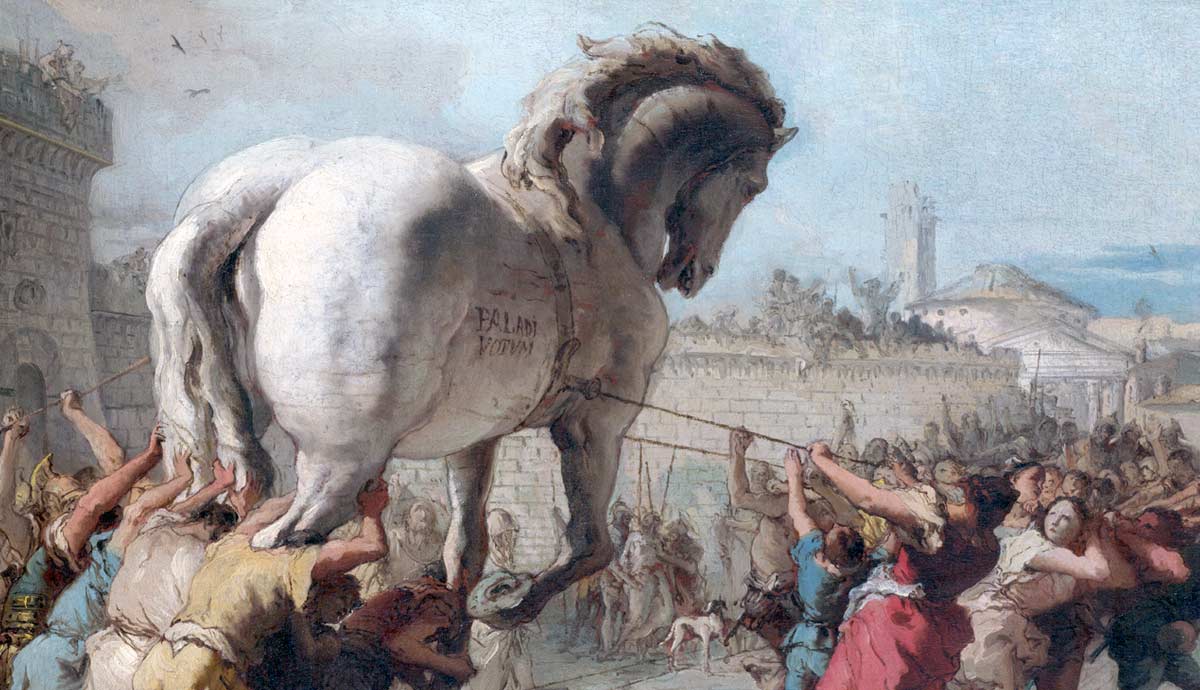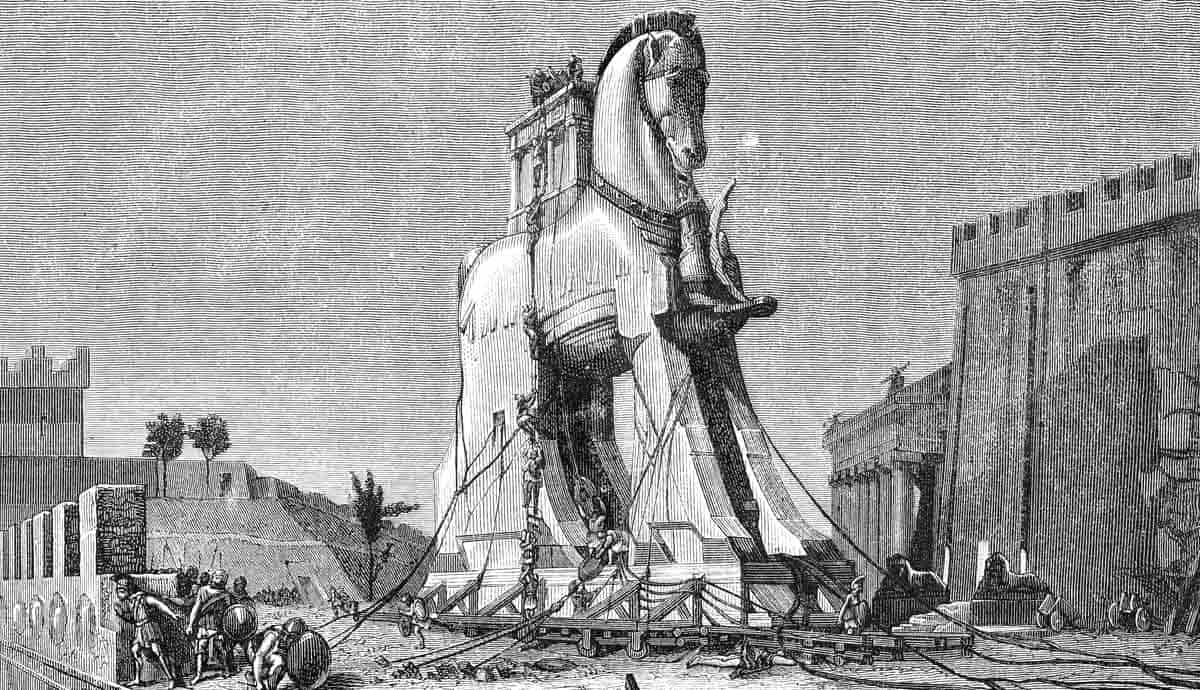
The Trojan War is undoubtedly the most famous conflict in Greek legend. The ancient Greeks wrote about it extensively, and there are many statements regarding when it took place. These claims, although not all consistent, generally point to c. 1200 BCE as the date of the Trojan War. For this reason, many researchers have interpreted the Iliad within the context of the Bronze Age. Furthermore, they have sought traces of a potential historical conflict behind the story in that era. However, some modern research suggests that these ancient estimates could be off by several centuries.
Does Herodotus Place the Trojan War in the Iron Age?

First, let us consider the earliest explicit chronological evidence for the Trojan War. This comes from the Greek historian Herodotus, writing in the mid-5th century BCE. According to The Histories 2.145, the Trojan War was about 800 years prior to his time. That would place it in c. 1250 BCE.
The problem with this oft-repeated figure from Herodotus is that this same Greek writer made various demonstrable exaggerations in his estimates elsewhere. For instance, just a few chapters earlier, in 2.137-140, Herodotus placed Pharaoh Shabaka of Egypt some 750 years before his own time. However, Shabaka historically lived in c. 700 BCE, just 250 years before Herodotus wrote. It should go without saying that we cannot simply trust Herodotus’ estimates.
Another example is the fact that Herodotus placed Cadmus, the first Greek hero, 1,600 years before his own time, or about 800 years before the Trojan War (2.145). Yet in another place, he put the Trojan War a mere six generations after Cadmus (4.147). This would imply an absurd average of 133 years per generation. Six generations should actually cover a total of 120 to 200 years.

Based on this, can Herodotus’ claim that the Trojan War occurred 800 years before his own time really be taken as a reliable statement? Or was it exaggerated, like many of his other claims about time periods?
Looking at other information Herodotus provided can shed some light on this matter. For instance, as we have seen, Herodotus placed the Trojan War decidedly after the time of Cadmus. In Greek records, Cadmus was the hero who was said to have brought the Phoenician alphabet to Greece. Historically, we know that the Greeks really did adopt the Phoenician alphabet, so the tradition about Cadmus is at least partially historical. However, according to archaeology, when did the Greeks start using the Phoenician alphabet? The evidence is clear that it was no earlier than the 9th century BCE. Therefore, Herodotus’ sequence of events would place the Trojan War more recently than that.
Additionally, Herodotus made Perdiccas I of Macedon the direct son of Temenus rather than a more distant descendant, as later records claimed. Perdiccas I is known to have lived in the 7th century BCE, while Temenus supposedly lived in the decades following the Trojan War.
Evidence From Ctesias

After Herodotus, another early source for the date of the Trojan War is Ctesias. He was a Greek historian writing in c. 400 BCE. He wrote a history of Assyria. In this history, he included a mention of the Trojan War in his history of the kings of Assyria, clearly placing it in a specific chronological context. According to Ctesias’ account, the Assyrian Empire lasted for 1,360 years. There were 30 kings who ruled over it in a direct line of descent. The Trojan War occurred during the reign of the 22nd king. It was this Assyrian king who sent Memnon from Elam to Troy to aid it in the war against the Greeks. Finally, it was in the reign of the 30th king that the grand city of Nineveh fell and the empire ended.
Ctesias dated the fall of Nineveh to 907 BCE. Furthermore, he placed the 22nd king 1,000 years after the first king, or in other words, 360 years before the fall of Nineveh.

The result of Ctesias’ chronological information would place the 22nd king’s rule in c. 1267 BCE. Since the Trojan War supposedly happened in that king’s reign, that supports a late Bronze Age date for the Trojan War. However, is this traditional date actually accurate? In reality, modern research has highlighted just how wrong this is. In 2009, historian Nikos Kokkinos pointed out the obvious fact that Ctesias’ chronology is massively extended. For one thing, he misdated the fall of Nineveh by several centuries. Rather than occurring in 907 BCE, historians now know that it occurred in the second half of the 7th century BCE.
Furthermore, Kokkinos highlighted the issue with Ctesias having the Assyrian Empire last 1,360 years with only 30 kings. This would give an average of over 45 years per generation, which is obviously much too long. In fact, an average of about half that would be more realistic. Together, both of these corrections would bring forward the date of the Trojan War significantly.
The True Date Indicated by Ctesias

In his calculations, Kokkinos used a corrected average of about 30 years per generation. This would place the Trojan War in the 9th century BCE, given Ctesias’ claim that it occurred in the reign of the 22nd Assyrian king. However, Kokkinos’ “correction” is, in itself, highly questionable. In fact, we know exactly who the Assyrian kings were, and we know how most of them were related. For this reason, we know that an average closer to 22 or 23 years per generation is more accurate. When we use these figures to interpret Ctesias’ claim, that would place the Trojan War closer to c. 800 BCE.
Furthermore, the entire context of Ctesias’ narrative points to a date in the Iron Age rather than the Bronze Age. As mentioned earlier, he describes the king of Assyria as sending Memnon from Elam to Troy. While obviously not historically accurate, this is clearly derived from a description of the Assyrian Empire near its height in the Iron Age. In the Bronze Age, Assyria barely had anything to do with Anatolia.
Evidence From Other Legends

The Odyssey is not the only tale that exists about the efforts of Greek commanders to return home after the Trojan War. In fact, numerous traditions existed about commanders attempting to return to their homes and being driven off course by the gods or diverted by other means. Strabo recorded a tradition about Philoctetes, a Greek hero from Thessaly. According to Strabo, he ended up having to move to Italy, where he founded several cities. One of these was Krimisa. In fact, this legend appears to go at least as far back as Lycophron in the 4th century BCE. However, historians acknowledge that Krimisa was founded in the 7th century BCE, well into the Iron Age. Various other legends also exist about commanders who fought in the Trojan War settling in southern Italy. Yet, crucially, the Greeks did not start settling in southern Italy until the 8th century BCE.
Another relevant legend is that of Theseus. He lived in the generation before the Trojan War, and he was famous among the Greeks for uniting Attica under the rule of Athens. Yet, archaeology shows that Attica was not united under Athens until the 8th century BCE. This has not gone unnoticed. Three professors in Classical Mythology: Tenth Edition (2013) speculated that the legendary Heroic Age may have been centuries more recent than commonly assumed.
Is the Iliad Consistent With This Revised Date?

Of course, if the Trojan War was actually a conflict that occurred in the Iron Age, then how would this be consistent with the Iliad? After all, many scholars have argued that the Iliad contains traces of the Bronze Age.
The answer is that most Homeric scholars of the past two decades have shifted away from seeing genuine Bronze Age elements in the Iliad. Rather, the supposed Bronze Age elements are simply exaggerated, mythologized versions of the Iron Age with Archaic Era features nearer to Homer’s own time. For example, many scholars in the past assumed that the reference to Ajax having a shield that went down to his feet meant that he had a Bronze Age tower shield. However, a closer examination of the Iliad has revealed that Homer clearly had no regard for practicality. Therefore, Ajax’s shield was plausibly just a very large circular shield since all the other shields in the Iliad are described as circular.
The fact is, the overwhelming majority of Homer’s descriptions are recognized by scholars today as reflecting the Iron Age, not the Bronze Age.
Did the Trojan War Really Occur in the Iron Age?

In conclusion, is there any evidence that the Trojan War really occurred in the Iron Age instead of the Bronze Age? We have seen that the traditional date for the Trojan War does not have a solid basis. One of the earliest sources for the date of c. 1200 BCE is Herodotus, yet he can be shown to have exaggerated time periods on numerous occasions. When we look at the other information he provided, he actually seems to have placed the Trojan War in the 8th century BCE.
Furthermore, Ctesias’ date of c. 1267 BCE for the Trojan War was demonstrably the result of several major miscalculations and exaggerations. His information would actually suggest a date close to c. 800 BCE. This same approximate date, or even later, is supported when we compare certain legends to the archaeological reality. For instance, based on the archaeology, Theseus’ unification of Attica would appear to have been in the 8th century BCE.
For these and many other reasons, a variety of scholars over the past few decades have either suggested or strongly argued for a much more recent date for the Trojan War.










